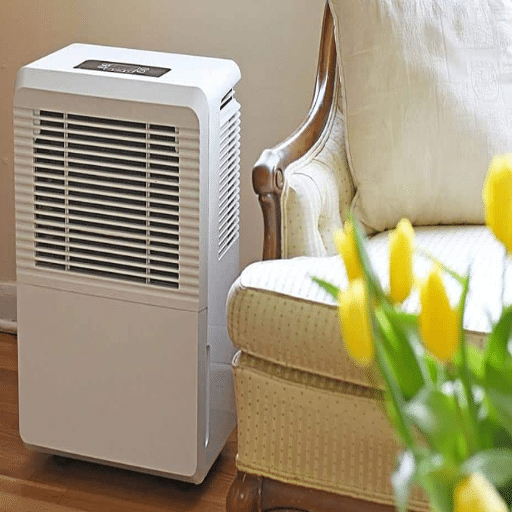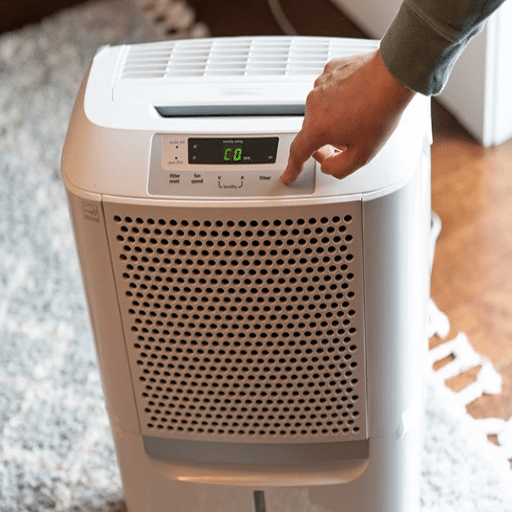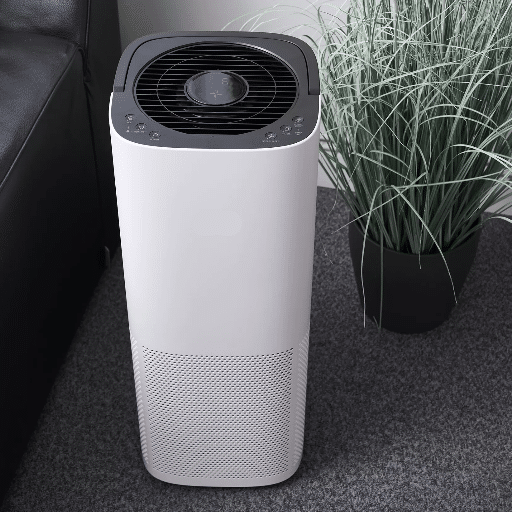When it comes to maintaining a comfortable indoor environment, dehumidifiers and air conditioners are two commonly used appliances that often get compared. But how do they differ in terms of energy consumption and efficiency, and which one is better suited for your needs? Understanding these differences is essential for making an informed decision that balances comfort, cost, and sustainability. This article dives deep into the functionality and purpose of each device, breaking down how they operate, their energy usage patterns, and the specific scenarios where each one excels. Whether you’re looking to reduce humidity, cool your home, or save on energy bills, this guide is designed to help you choose the option that works best for you.
How Does a Dehumidifier Work?
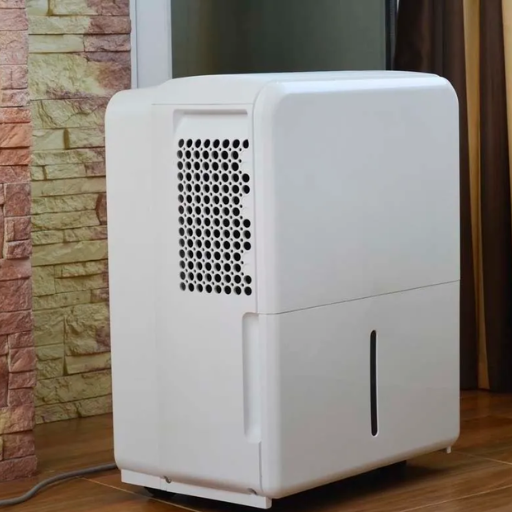
A dehumidifier works by removing excess moisture from the air to reduce humidity levels. It draws in air from the surrounding environment, passes it over cold coils to condense the moisture into water, and then releases the drier air back into the room. The collected water is stored in a tank or drained away through a hose. This process helps prevent issues like mold, mildew, and dampness, making indoor spaces more comfortable and healthier to live in.
What is the Role of the Compressor in a Dehumidifier?
The compressor is a critical component of a dehumidifier, playing a central role in the refrigeration cycle that makes moisture removal possible. It compresses the refrigerant gas, causing it to become hot and highly pressurized. This pressurized gas then moves through a condenser coil, where it releases heat and transforms into a liquid. The cooled refrigerant flows to the evaporator coil, where it absorbs heat from the surrounding air, causing the air to cool. When the warm, humid air passes over the cool evaporator coil, the temperature drops below the dew point, and the moisture in the air condenses into water droplets. These droplets are collected and drained away, completing the dehumidification process.
Modern compressors are designed to operate efficiently, with some advanced models featuring variable-speed technology to optimize energy use. For instance, dehumidifiers with energy-efficient compressors can deliver the same performance while consuming up to 20% less energy. Additionally, compressors have a direct impact on the dehumidifier’s capacity, typically measured in pints of water removed per day. Units with larger, more powerful compressors can handle higher levels of humidity in bigger spaces, making them suitable for basements, warehouses, or industrial applications. By efficiently driving the refrigeration cycle, the compressor ensures the dehumidifier operates effectively and maintains a comfortable indoor environment.
How Does a Dehumidifier Remove Moisture from the Air?
Dehumidifiers work through a systematic process of extracting excess moisture from the air, creating a healthier and more comfortable indoor environment. The core mechanism follows three main steps:
- Air Intake – A built-in fan draws in the surrounding humid air into the dehumidifier unit. This step ensures that a substantial volume of air can pass through the system for effective dehumidification.
- Cooling and Condensation – The moist air passes over cold coils, typically part of the system’s refrigeration cycle. Here, the temperature of the air is reduced, leading to the condensation of moisture. The condensed water droplets form on the cold coils and are then funneled into a collection reservoir or expelled through a drain hose.
- Releasing Dry Air – After the air has been stripped of excess moisture, it is reheated slightly to avoid lowering the room temperature significantly and is then released back into the room as drier air.
Modern dehumidifiers boast advanced features that optimize this process. For example, desiccant-based technologies can operate efficiently even in colder rooms compared to traditional compressor-based models. According to current data, optimal relative humidity levels indoors should be maintained between 30% and 50% to prevent mold growth, dust mites, and other allergens. Some high-performing dehumidifiers can lower humidity levels in areas up to 4,500 square feet, removing as much as 70 pints of water per day, depending on room size and conditions. Smart sensors and automatic shut-off features now allow for precision control, conserving energy and enhancing ease of use.
By efficiently controlling moisture levels, dehumidifiers play a critical role in improving air quality, protecting furniture and structures from dampness, and promoting overall health and comfort.
Can a Dehumidifier Cool the Air?
While a dehumidifier does not directly cool the air like an air conditioner, it can indirectly make a space feel cooler and more comfortable. By reducing the humidity levels in a room, dehumidifiers help eliminate the heavy, sticky feeling caused by excess moisture in the air. This often leads to a perception of cooler air, as the body can regulate its temperature more efficiently through sweat evaporation when humidity is lower.
According to recent data, relative humidity levels between 30% and 50% are optimal for comfort. High humidity can make temperatures of 75°F feel more like 80°F or higher; however, using a dehumidifier to maintain an ideal humidity range allows the air to feel more refreshing and less oppressive, even if the actual temperature remains unchanged. Some studies also note that dryer air encourages better airflow from fans or ventilation systems, further enhancing the cooling effect.
Although dehumidifiers don’t lower the temperature on a thermostat, they are an energy-efficient solution for improving indoor comfort, particularly in warmer months or climates where high humidity is a common issue. Combining a dehumidifier with other cooling methods, such as fans or air conditioning, can maximize the cooling effect in a space.
How Do Air Conditioners Work?
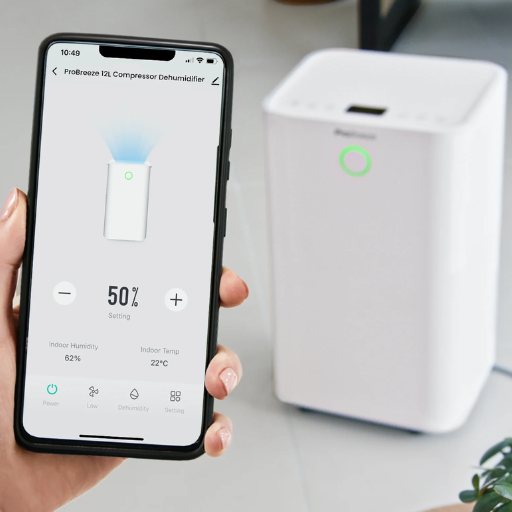
Air conditioners work by removing heat and moisture from indoor air to create a cooler, more comfortable environment. They operate through a cycle that involves three main components: the compressor, the condenser, and the evaporator. First, the refrigerant absorbs heat from the indoor air as it passes over the evaporator coils. This refrigerant, now heated, moves to the compressor, where it is pressurized and sent to the condenser. At the condenser, the heat is released outside, and the refrigerant cycles back to repeat the process. Additionally, air conditioners filter and circulate the air, improving the overall air quality while keeping the space cool.
What is the Refrigerant Cycle in an AC Unit?
The refrigerant cycle is at the core of an air conditioner’s ability to regulate indoor temperatures efficiently. It operates as a closed-loop system and involves four critical components working together seamlessly to transfer heat and cool indoor spaces.
- Evaporator Coils: The cycle begins at the evaporator, located indoors. Here, the refrigerant in its liquid form absorbs heat from the warm indoor air as it passes over the coils. During this process, the refrigerant evaporates, transforming into a low-pressure, low-temperature gas.
- Compressor: Next, the gaseous refrigerant moves to the compressor, which is situated in the external unit. The compressor is responsible for pressurizing the refrigerant, significantly raising its temperature in the process. This step boosts the refrigerant’s energy level and prepares it for efficient heat release.
- Condenser Coils: Upon reaching the condenser, also located in the outdoor unit, the high-pressure, high-temperature gaseous refrigerant releases the heat it absorbed. This is achieved as outdoor air flows over the heated coils, dissipating the heat into the environment. Consequently, the refrigerant cools down and reverts to its liquid state.
- Expansion Valve: The liquid refrigerant then passes through the expansion valve, which reduces its pressure and temperature before re-entering the evaporator coils. This prepares the refrigerant to absorb heat once again, completing the cycle.
Modern air conditioners equipped with improved refrigerant technologies offer significant advancements in energy efficiency and environmental impact. For example, many systems now utilize eco-friendly refrigerants like R-32 and R-410A that have lower global warming potential (GWP). Studies show that these refrigerants, combined with advanced compressor designs, can improve energy efficiency by up to 20% compared to older systems.
Understanding the refrigerant cycle not only highlights the engineering precision behind air conditioners but also underscores how crucial regular maintenance is. Proper upkeep, such as keeping coils clean and checking refrigerant levels, ensures that the system runs optimally, reduces energy costs, and extends the unit’s lifespan.
How Does an Air Conditioner Cool the Room?
An air conditioner cools a room by leveraging the principles of heat transfer and the properties of refrigerants to remove heat from indoor spaces and release it outside. The process begins with the refrigerant, a specialized fluid that can absorb and release heat effectively. Inside the system, the refrigerant passes through four key components: the evaporator coil, the compressor, the condenser coil, and the expansion valve.
First, warm indoor air is drawn into the air conditioning unit and passes over the evaporator coil, where the refrigerant absorbs the heat, causing it to evaporate and turn into a low-pressure gas. This process not only removes heat but also reduces humidity, as moisture in the air condenses on the cold evaporator coil. The low-pressure refrigerant gas is then compressed by the compressor, which increases its pressure and temperature.
Next, the heated, high-pressure gas flows to the condenser coil located outside the building. Here, outdoor air blows over the condenser coil, allowing the refrigerant to release the absorbed heat into the environment. As it cools, the refrigerant transitions back into a liquid state. Finally, the liquid refrigerant passes through the expansion valve, which lowers its pressure and temperature before it re-enters the evaporator coil, ready to repeat the cycle.
Modern air conditioners often incorporate advanced features such as variable-speed compressors and smart controls, which enhance efficiency and performance. For instance, some units achieve Seasonal Energy Efficiency Ratio (SEER) ratings of 20 or higher, showcasing remarkable energy-saving capabilities compared to older models. This intricate cycle, combined with technological innovations, ensures that air conditioners not only cool rooms effectively but also do so with minimal energy consumption and maximum comfort.
What is the Role of the Condenser in an AC?
The condenser plays a critical role in an air conditioning system by facilitating the release of heat absorbed from indoor air to the outdoor environment. Located in the outdoor unit of an AC system, the condenser comprises essential components such as the condenser coil, compressor, fan, and refrigerant lines. When the high-pressure refrigerant gas flows into the condenser from the compressor, the system works to cool and convert it into a high-pressure liquid. This phase change is achieved as the condenser coil expels heat through the airflow generated by the fan, effectively dissipating it into the surrounding outdoor air.
Modern condensers are crafted with advanced technologies to enhance performance and energy efficiency. For instance, many units now use microchannel heat exchangers, which improve heat transfer efficiency and reduce the overall size of the condenser. Additionally, energy-efficient condensers can contribute to achieving astounding SEER ratings, often exceeding 20 in cutting-edge models, which drastically lowers energy costs. These innovations ensure that the condenser operates optimally, keeping energy use down while maintaining consistent and rapid cooling performance. This critical process underscores why the condenser is often seen as the backbone of any air conditioning system.
Which Uses Less Energy: Dehumidifier vs Air Conditioner?
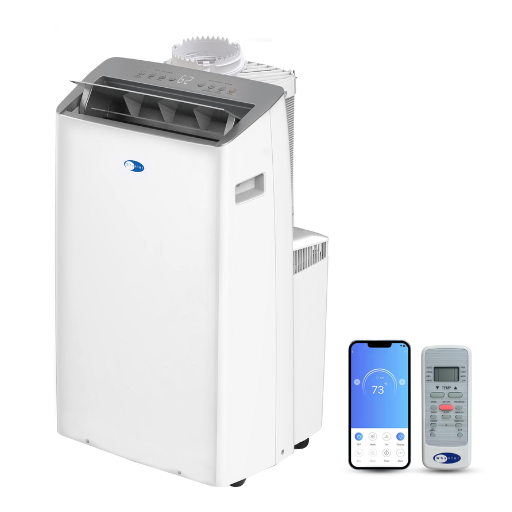
When it comes to energy usage, dehumidifiers typically use less energy than air conditioners. A dehumidifier’s primary function is to remove excess moisture from the air, which requires less power compared to the comprehensive cooling process of an air conditioner. Air conditioners, on the other hand, cool the air and often dehumidify as a secondary function, which demands considerably more energy. For a smaller reduction in humidity, a dehumidifier is the more energy-efficient choice. However, if cooling is also required, an air conditioner becomes necessary despite its higher energy consumption.
Comparing Energy Consumption in Dehumidifiers and Air Conditioners
When comparing the energy consumption of dehumidifiers and air conditioners, several factors come into play, including the device’s capacity, settings, and duration of use. A standard dehumidifier typically operates at a power range of 300 to 700 watts, depending on its size and efficiency. For example, a 30-pint dehumidifier may consume around 300 watts, while a 70-pint model can require closer to 700 watts. On the other hand, air conditioners demand significantly higher energy levels. A medium-sized central air conditioning unit might use between 2,000 to 3,500 watts per hour, while a window air conditioner generally consumes around 500 to 1,500 watts.
To put this in perspective, running a dehumidifier for 10 hours might use approximately 3 to 7 kilowatt-hours (kWh), whereas the same operating time for an air conditioner could result in 15 to 35 kWh of energy usage. This discrepancy underscores the large difference in energy efficiency between these devices. However, air conditioners provide both cooling and some dehumidification, making them essential for environments where regulating temperature is as critical as controlling humidity.
Energy consumption can also vary based on usage patterns and environmental factors. For instance, in a space with moderate humidity but high temperatures, an air conditioner may operate at maximum capacity, leading to increased energy use. Conversely, if the priority is strictly moisture removal in a cooler room, a dehumidifier proves to be the more practical and energy-efficient solution. Modern energy-saving technologies, like inverter compressors and smart thermostats, further help improve the energy efficiency of both types of appliances.
Understanding these variables enables consumers to make informed decisions, choosing equipment tailored to their specific needs while minimizing energy costs.
What Factors Affect Energy Efficiency?
Several factors directly impact the energy efficiency of appliances and systems. Understanding these elements can empower consumers to optimize performance while lowering electricity consumption and costs.
- Appliance Design and Technology
The quality of design and incorporation of modern technologies significantly affect energy efficiency. For instance, appliances with inverter technology consume up to 30%-50% less energy compared to conventional models. Smart sensors and energy-monitoring systems in modern devices help regulate power usage, ensuring peak efficiency during operation.
- Energy Ratings and Standards
Energy efficiency ratings, such as the ENERGY STAR certification, provide a reliable benchmark for selecting appliances. For example, ENERGY STAR-certified refrigerators are reportedly around 15% more energy-efficient than non-certified models. These standards encourage manufacturers to innovate and provide better energy-saving solutions.
- Usage Patterns
How equipment is used and maintained plays a crucial role in determining its efficiency. For example, regularly cleaning air filters in HVAC systems can improve performance by 5%-15%, preventing increased energy demands from clogged components. Additionally, utilizing appliances during off-peak hours can reduce strain on energy grids and lower utility costs.
- Environmental Conditions
External factors, such as ambient room temperatures or humidity levels, influence energy consumption. Air conditioners, for instance, work harder in hot and humid climates, consuming more energy. Similarly, insulation quality in homes or buildings directly impacts heating and cooling efficiency, as well-insulated spaces retain desired temperatures longer.
- Advanced Automation Systems
Implementing smart home technology can significantly optimize energy use. Programmable thermostats, for instance, adjust temperatures automatically based on schedules or real-time occupancy, reducing unnecessary energy wastage. Reports suggest that using smart thermostats can save households up to $180 annually on heating and cooling costs.
- Maintenance and Lifespan
Longevity and upkeep of appliances are equally important. An aging system or improperly maintained equipment may gradually lose its efficiency. Routine inspections and timely repairs not only extend the lifespan of appliances but also ensure they operate at optimum energy levels.
By focusing on these factors, consumers can make sustainable choices, reduce energy waste, and contribute to a greener future—all while cutting down on utility expenses.
Is it Cheaper to Run a Dehumidifier Alone?
When determining whether running a dehumidifier alone is cost-effective, several factors must be considered, including energy consumption, room size, humidity levels, and the appliance’s energy efficiency. On average, a standard dehumidifier can use approximately 300 to 700 watts of electricity per hour, depending on the model and capacity. By comparison, pairing a dehumidifier with a central air conditioning system might increase total energy consumption but can improve overall climate control, potentially shortening the operation time of both appliances.
Running a dehumidifier alone is often more economical in mildly humid conditions or smaller spaces, as it specifically targets excess moisture without needing to cool the air significantly. For instance, dehumidifiers designed for energy efficiency—look for those with an Energy Star certification—can cost as little as $0.03 to $0.10 per hour based on typical electricity rates. Over time, this efficiency minimizes unnecessary energy waste, which helps lower monthly utility bills.
However, in larger spaces or during extremely humid seasons, combining air conditioning and a dehumidifier can sometimes be a better solution. Air conditioners work harder in high-humidity environments, as they also need to remove moisture from the air to function correctly. Adding a dehumidifier can relieve this burden, leading to reduced overall strain and improved energy efficiency of the cooling system.
Ultimately, the cost-effectiveness of using a dehumidifier alone depends on your specific circumstances, from the size and humidity level of your area to the energy ratings of your appliances. Careful monitoring of energy usage and choosing advanced, eco-friendly appliances play a crucial role in keeping energy costs low while maintaining a comfortable indoor environment.
Impact of Humidity on Energy Consumption
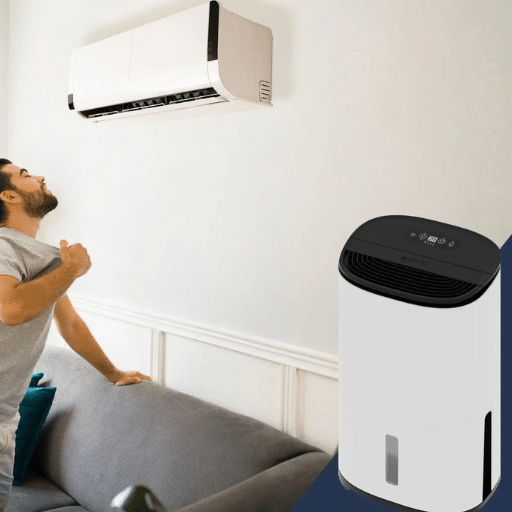
High humidity directly contributes to increased energy consumption by forcing cooling systems to work harder. When the air contains excess moisture, air conditioning units need to remove both heat and humidity to maintain a comfortable indoor environment. This dual process increases energy usage, leading to higher electricity bills. Using a dehumidifier in tandem with an air conditioner can alleviate strain on the cooling system, allowing it to operate more efficiently. Opting for energy-efficient appliances and maintaining proper ventilation are key steps to mitigating the impact of humidity on energy use.
How Does High Humidity Affect AC Units?
High humidity significantly influences the performance and efficiency of air conditioning systems. When the indoor air contains excessive moisture, the air conditioning unit must work harder to not only cool the air but also remove excess humidity. This extra workload can lead to increased energy consumption and higher utility bills. For instance, studies show that air conditioners become about 30% less efficient in a highly humid environment because they struggle to maintain comfortable indoor conditions.
Excessive humidity can also put undue strain on the system’s components, such as the evaporator coil, which is responsible for dehumidifying the air. Over time, this strain may result in wear and tear, reduced lifespan of the unit, and costly repairs. Additionally, coils that operate in high-humidity conditions are more prone to freezing, which can impede airflow and hinder cooling efficiency.
Another factor to consider is indoor air quality. High humidity encourages the growth of mold, mildew, and dust mites, which can exacerbate allergies and respiratory issues. Effective humidity control is essential for maintaining a healthy and comfortable living environment, and it’s recommended to keep indoor relative humidity levels between 30% and 50% for optimal comfort and AC efficiency, as suggested by energy experts and building standards.
By understanding the relationship between humidity and air conditioner performance, homeowners can take proactive steps like regular maintenance, pairing their AC unit with a dehumidifier, and sealing air leaks to optimize both efficiency and comfort.
How Does Dehumidifying Improve Energy Efficiency?
Dehumidifying plays a crucial role in enhancing energy efficiency by reducing the strain on your air conditioning system. When the air inside a home has high humidity levels, the air conditioner not only needs to cool the air but also work harder to remove excess moisture. This additional workload increases energy consumption and lowers overall efficiency.
By incorporating a dehumidifier, the air conditioner can operate more efficiently, as the dehumidifier takes on the task of managing moisture levels. According to recent statistics, lowering indoor humidity can reduce cooling energy costs by up to 15%, depending on the region and climate conditions. Additionally, maintaining proper humidity levels, typically between 30% and 50%, ensures that spaces feel cooler at higher temperatures, reducing the need to lower the thermostat.
Dehumidifying also helps prevent the accumulation of mold, mildew, and dust mites, which thrive in moist environments. This not only improves indoor air quality but also protects HVAC systems from damage and inefficiency caused by excess moisture buildup, reducing the need for costly repairs and replacements.
How to Maintain Optimal Humidity Levels?
To maintain optimal humidity levels in your home, it’s essential to combine practical techniques with the right tools and knowledge. The recommended indoor humidity range is typically between 30% and 50%, as levels below or above this range can lead to discomfort and potential health or structural issues. Here are several effective methods to achieve and sustain ideal humidity:
- Use a Hygrometer – A hygrometer is a simple yet essential tool to monitor indoor humidity accurately. By consistently tracking levels, you can identify when adjustments are needed.
- Invest in a Dehumidifier or Humidifier – Depending on your climate and season, a dehumidifier can remove excess moisture, while a humidifier can add it when the air becomes too dry. Modern smart models allow for automatic regulation to maintain a set range.
- Improve Ventilation – Proper airflow is crucial in controlling humidity. Use exhaust fans in kitchens and bathrooms, where moisture levels tend to rise significantly during cooking or showering, to quickly remove excess humidity.
- Seal Windows and Doors – Poorly sealed windows and doors can allow outside air to affect your indoor levels. Weatherstripping and caulking can help prevent unwanted moisture infiltration.
- Houseplants with Caution – While houseplants can enhance air quality, overwatering them can contribute to higher humidity levels. Ensure proper drainage and avoid overcrowding plants in a single space.
- Address Water Leaks and Insulate Pipes – Fix any leaking pipes or plumbing issues promptly and insulate cold water pipes to avoid condensation, which can raise humidity levels and potentially lead to mold.
Data suggests that consistently maintaining proper humidity levels within the recommended range can improve respiratory health by reducing allergen levels and minimizing the risk of mold growth. Additionally, well-regulated humidity can prolong the lifespan of wooden furniture and floors, as extreme dryness or excessive moisture can cause damage over time. Employing these strategies not only enhances comfort but also contributes to a healthier and more energy-efficient home environment.
Improving Indoor Air Quality with Dehumidifiers and Air Conditioners
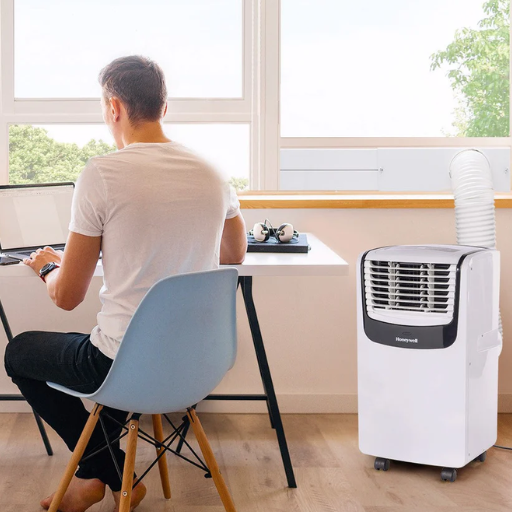
Dehumidifiers and air conditioners are practical tools for improving indoor air quality by maintaining optimal humidity levels and promoting airflow. Dehumidifiers help remove excess moisture from the air, reducing the risk of mold, mildew, and dust mites. Meanwhile, air conditioners moderate temperature and filter airborne particles, enhancing air circulation while trapping allergens and pollutants. To maximize their effectiveness, regularly clean and maintain these devices, including replacing filters and ensuring proper ventilation. Using these appliances together creates a balanced, comfortable, and healthier living environment.
How Dehumidification Enhances Indoor Air
Dehumidification plays a pivotal role in maintaining the quality of indoor air by directly combating excess moisture levels. When indoor humidity rises above 60%, it can create an ideal environment for mold and mildew growth, as well as dust mites, which are major triggers for asthma and allergies. By reducing humidity levels to the optimal range of 30-50%, dehumidifiers help eliminate these health risks, creating a safer breathing environment.
Furthermore, lower humidity levels improve thermal comfort, as they allow the body to regulate its temperature more efficiently. Studies indicate that reducing indoor humidity can also positively impact overall energy efficiency. For instance, air conditioning systems operate more effectively in environments with controlled moisture levels, as they don’t have to work harder to cool dense, humid air. This synergy between dehumidifiers and air conditioners can contribute to noticeable energy savings over time.
The functionality of modern dehumidifiers has also seen advancements, with features like smart humidity sensors and energy-efficient modes gaining prominence. These innovations ensure consistent, precise control of indoor moisture levels while minimizing energy consumption. Investing in a quality dehumidifier complements other ventilation systems, offering a comprehensive approach to clean, healthy, and comfortable indoor air.
Using an Air Conditioner with a Dehumidifier for Better Air Quality
Combining an air conditioner with a dehumidifier results in a balanced and efficient system to enhance air quality and overall comfort. Air conditioners are primarily designed to cool the air, but they also remove some moisture as part of the cooling process. However, they may not always address high humidity levels effectively, especially in regions with persistently humid climates. This is where a dehumidifier becomes a valuable addition. By working alongside an air conditioner, a dehumidifier targets excess moisture, reducing the strain on the AC unit and improving its efficiency.
Research indicates that maintaining indoor humidity levels between 30% and 50% is ideal for comfort and health. Higher humidity levels can lead to mold growth, unpleasant odors, and increased allergens, which may trigger respiratory issues or allergies. Data also shows that operating a dehumidifier in tandem with an air conditioner can reduce energy usage significantly, as the dehumidifier helps lessen the burden on the air conditioner to overwork during humid conditions.
Modern dehumidifiers and air conditioners often come with smart features, such as programmable settings, Wi-Fi connectivity, and energy-efficient modes, enhancing convenience while optimizing performance. This combination not only ensures a consistently cool and comfortable indoor environment but also contributes to improved long-term energy management and air quality.
Managing Moisture in the Air for Healthier Living Spaces
Maintaining appropriate humidity levels indoors is crucial for creating a healthy and comfortable living environment. The ideal indoor relative humidity typically ranges between 30% and 50%. Levels exceeding 60% can encourage the growth of mold, mildew, and dust mites, potentially worsening allergies and respiratory issues. Conversely, humidity levels below 30% can lead to dry skin, irritated sinuses, and discomfort.
Modern advancements in humidity control technology provide effective solutions. Dehumidifiers, for instance, are capable of extracting several liters of water per day, depending on the unit’s size and capacity. Energy-efficient models can remove up to 75 pints of moisture daily while consuming less power, making them a cost-effective option for larger spaces. Similarly, smart HVAC systems equipped with humidity sensors automatically adjust settings to maintain optimal moisture levels, ensuring consistent comfort.
The impact of indoor humidity extends beyond health concerns. High moisture levels can also damage wooden furniture, flooring, and walls, leading to costly repairs over time. To efficiently manage this, devices like hygrometers are highly recommended for monitoring humidity levels in real time. Maintaining proper ventilation through exhaust fans and regularly cleaning air filters further promotes balanced indoor air quality.
Overall, consistent moisture regulation not only protects your home but greatly enhances well-being, fostering a cleaner, more comfortable living space for everyone.
Reference Sources
-
Performance Analysis of Hybrid Air Conditioning and Humidification-Dehumidification Systems1:
- Key Findings: This study explored hybrid systems combining air conditioning with humidification-dehumidification for energy savings and water production. It found that integrating evaporative cooling and heat recovery can significantly reduce energy consumption while producing fresh water.
- Methodology: Theoretical modeling and numerical simulations were used to evaluate system configurations under varying operating conditions.
-
Experimental Evaluation of Split Air Conditioner Integrated with Humidification-Dehumidification Unit2:
- Key Findings: Integrating a humidification-dehumidification unit with a split air conditioner reduced power consumption by 18.4% and improved the coefficient of performance (COP) by 48.5%. The system also produced freshwater as a byproduct.
- Methodology: Experimental setups tested the hybrid system under two operating scenarios to measure energy savings and performance improvements.
-
Performance Analysis of a Heat Pump Air Conditioner Coupled with Liquid Dehumidification Cycle3:
- Key Findings: A novel system combining a heat pump air conditioner with a liquid desiccant cycle reduced energy consumption by 22.64% compared to conventional systems. The system also improved indoor air quality by independently controlling temperature and humidity.
- Methodology: Theoretical and experimental analyses were conducted using lithium chloride as the working fluid in the desiccant cycle.
Frequently Asked Questions (FAQs)
Q: What is the primary difference between an air conditioner and a dehumidifier in terms of energy consumption?
A: The primary difference between an air conditioner and a dehumidifier in terms of energy consumption is that air conditioners are designed to cool air by removing heat energy, which requires more power, whereas dehumidifiers focus on extracting moisture from the air, making them generally more energy efficient when it comes to dehumidification.
Q: How does using a dehumidifier save energy compared to running an air conditioner?
A: Using a dehumidifier can save energy because it consumes less power than an air conditioner. By focusing on removing humidity from the air rather than cooling it, a dehumidifier would require less energy, especially in situations where reducing humidity, rather than cooling, is the primary need.
Q: Can an air conditioner also dehumidify a room effectively?
A: Yes, air conditioners also dehumidify a room as part of their cooling process by removing humidity from the air. However, they are less energy efficient than using a dehumidifier solely for dehumidification purposes because their primary function is to cool air.
Q: Is it more energy efficient to use a portable air conditioner or a whole house dehumidifier?
A: It depends on the specific needs. A portable air conditioner may be more suitable for cooling specific areas but can be less energy efficient if used solely for dehumidification. A whole house dehumidifier is designed to extract moisture from the air throughout a larger space, which might be more energy efficient if humidity control is the main goal.
Q: In what situations should I run the dehumidifier instead of the air conditioner?
A: You should run the dehumidifier instead of the air conditioner in situations where your primary concern is reducing humidity rather than cooling the space. This is particularly useful in maintaining comfort and preventing mold in a warm but not hot, humid environment.
Q: How do air conditioners and dehumidifiers handle heat energy differently?
A: Air conditioners handle heat energy by absorbing and expelling hot air outside to produce cold air inside. Dehumidifiers, on the other hand, absorb humidity from the air and heat the air slightly as it passes through the system, resulting in warmer air being expelled back into the room.
Q: Is it possible to use an air conditioner solely for dehumidification?
A: While it is possible to use an air conditioner solely for dehumidification, it is not the most energy efficient method. Air conditioners are designed primarily to cool air, and using them just to remove humidity can result in unnecessary energy consumption.
Q: Does using an air conditioner vs dehumidifier affect the air quality in a room?
A: Both air conditioners and dehumidifiers can improve air quality by reducing humidity and preventing mold growth. However, air conditioners provide the added benefit of cooling the air, while dehumidifiers are more energy efficient at maintaining optimal humidity levels without excessive cooling.
Q: Can a dehumidifier replace an air conditioner in hot climates?
A: In hot climates, a dehumidifier cannot replace an air conditioner because it does not provide cool air. It can be used in conjunction with an air conditioner to improve comfort by reducing humidity, but an air conditioner is necessary to effectively cool the air.

